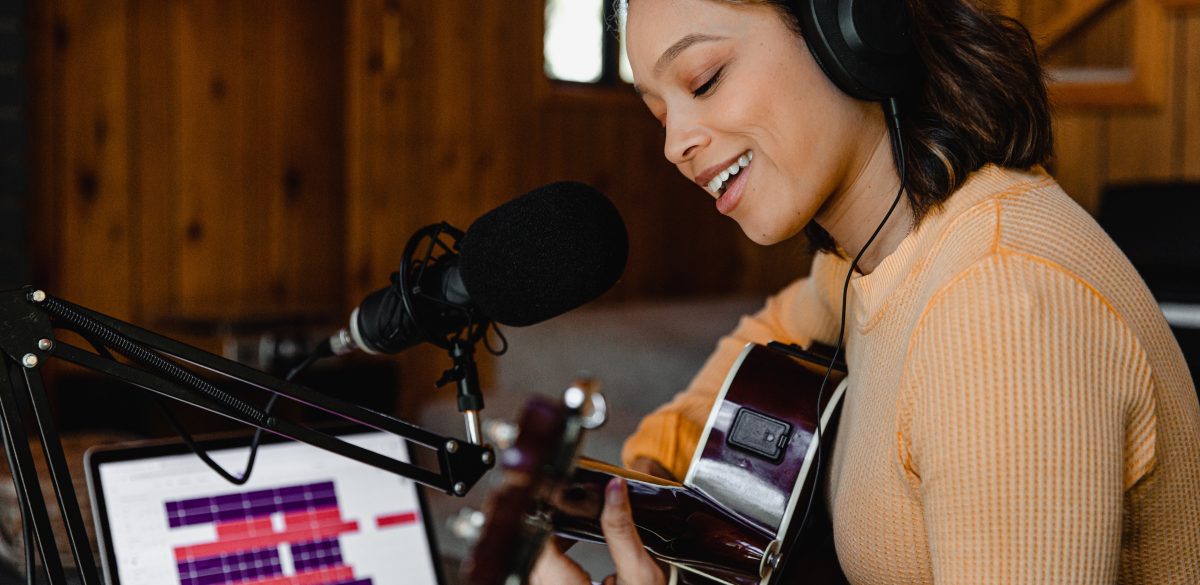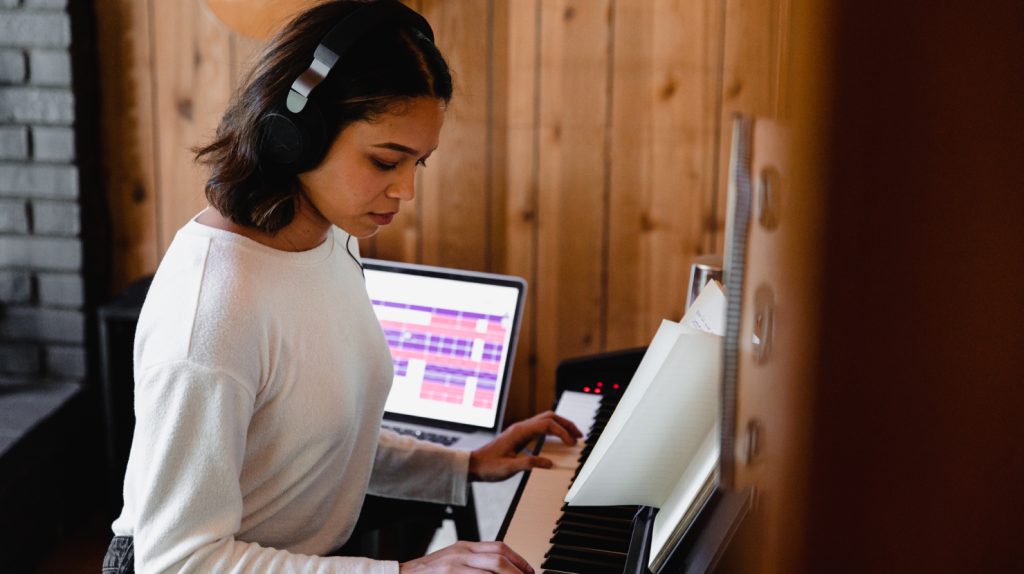
Mic Check, One-Two: Choosing the Right Microphone for Instrument Recording
Oct 11, 2023
-
Anton Berner
A great instrument recording starts with a quality microphone. But there are so many different types to choose from, and picking the wrong one can have disappointing results.
If you’re a musician who produces and records independently, setting yourself up with the right microphone is crucial for bringing your sonic visions to life.
In this blog post, we’ll explore the many types of mics you can use for independent recording. We’ll also look through a list of recommendations for which mics best suit which instruments so that your records come out perfectly tuned every time.
Understanding different microphone types
Before discussing which microphone type is best for recording which instrument, let’s run through the main types of mics you’ll find when searching online.

Pictured here is a Neumann condenser mic. Photo by Amin Asbaghipour on Unsplash
Condenser microphone
One of the oldest types of mics, a condenser microphone, is best used for vocals and acoustic instruments. They’re the most popular kind of mic you’ll find in recording studios due to their wide frequency range and sensitive, accurate ability to capture sound.
If you can only afford to get one microphone, start with a condenser. They’re the kind of mic that can work with a broad range of instruments and detect even the slightest of noises in a room, making them great for softer, wide-range instruments and vocals that may feature complex sonic details.
You can find condensers in two varieties: large or small diaphragms.
Large diaphragms capture a wider frequency response (think bigger, fatter sounds), and small diaphragms have lower self-noise, making them better for instruments with very high frequencies, such as violin or piccolo.

Pictured here is the AEA Ribbon Microphone. Photo by Steve Harvey on Unsplash
Ribbon microphone
Ribbon mics have a smooth, warm, vintage sound that works very well for vocalists who want to capture a more unique and silky sound.
However, as one of the older and rarer mic types, the ribbon microphone is very expensive and fragile, often needing to be bought secondhand.

Pictured here is the Shure SM7B dynamic microphone. Photo by Jukka Aalho on Unsplash.
Dynamic microphone
Sometimes called the “ice cream cone” microphone due to its classic shape, this kind of microphone is often used by rappers, big amps, and sometimes hard metal vocalists.
The selling point of a dynamic microphone is that it can record extremely loud volumes, making it good for drums, guitar amps, and live music festivals.
While not as sensitive as the condenser, dynamic mics’ boxy but clean recording capacity makes them great for certain live recording scenarios.
Which microphone should I use for my instrument?
Now that you’re familiar with the different types of microphones, we can delve into choosing the right one for your instrument recording. Here’s a comprehensive list of various instrument types listed next to the mic type that is best suited to their sonic waves.
Drums: Dynamic microphone
Drums are loud, boxy, and in need of a mic that can match their volume as well as intensity. Dynamic microphones can offer both while accommodating well for live recordings.
Wind instruments: Condenser microphone
Wind instruments produce complex, nuanced sounds, and highly sensitive sounds, which are best captured by the all-rounder condenser mic, preferably with a small diaphragm.
Vocals: Ribbon microphone
While a condenser mic will also work, ribbon mics can capture the silkiness and clarity of a singing voice like no other microphone can. They may be fussy, but their recording abilities are unmatched.
Acoustic instruments: Condenser microphone
With their sensitivity and precision, condenser mics are a perfect match for warm, deep acoustic sounds. For recording acoustic pianos and guitars, opt for a large diaphragm condenser mic.
Electric guitar: Dynamic or Ribbon microphone
Classic rock and roll is generally best captured by a dynamic mic, whose compatibility with high volumes is unmatched. But for a more unique and retro sound, ribbon mics will not disappoint.
Bass: Dynamic microphone
Deep and heavy bass strumming calls for a dynamic mic. Able to hold its ground with high volumes and deeper, darker sounds, bass recording with a dynamic mic will produce the best results.
String instruments: Condenser microphone
String instruments such as the violin, cello, piccolo, mandolin, or harp require a condenser mic. To do the complex noise of string instruments justice, both large and small diaphragms will do.

Choosing the right microphone when recording is the key to a professional sound.
Understanding how microphones work
The more you understand the tools you work with, the easier it becomes to create and mix music in a skillful way. Microphones are complex pieces of technology that can produce much better results when utilized properly, just like any creative tool.
Microphones capture sound waves from the air and transform them into identical electric signals.
Once those sound waves are captured, they’re transferred from the mic’s output to an audio interface or mixer for recording onto studio monitors, reproducing the original sound waves.
Although the three main types of microphones (ribbon, dynamic, and condenser) share the same core construction, the way that they convert sound into electrical signals is very different. The primary difference you’ll find in one microphone compared to the next relates to its polar pattern or the different directions from which the microphone detects and processes sound.
Some mics pick up sound directly in front of them, making them unidirectional, while others can detect it from all around, making them omnidirectional.
Others are bi-directional, picking up sound from either side.
Choosing a good microphone means choosing one that can pick up on the kind of sound that your instrument creates. The right one will detect the direction and sonic idiosyncrasies of your particular instrument, allowing it to be captured in a more sensitive and authentic way.
The right tools are key to making your instruments sing
A photographer needs a good camera, and a painter needs quality brushes. As a musician, quality sound-recording tools are essential for capturing the complex sound waves that your instruments produce, allowing you to record music that reflects your true talent and proclivity for audio art.
Knowing the difference between a condenser, dynamic, and ribbon microphone (as well as their different shapes and sizes) can help you immortalize sound to the highest degree of perfection possible.
Hopefully, this information equips you with the insight you need to choose the right microphone for instrument recording, pushing you that much further in your music career.


